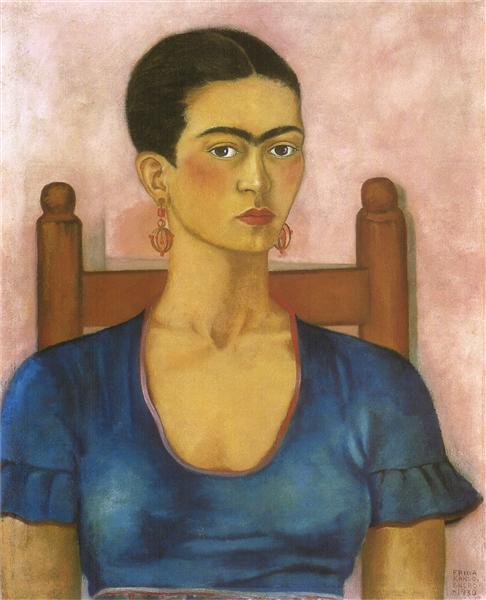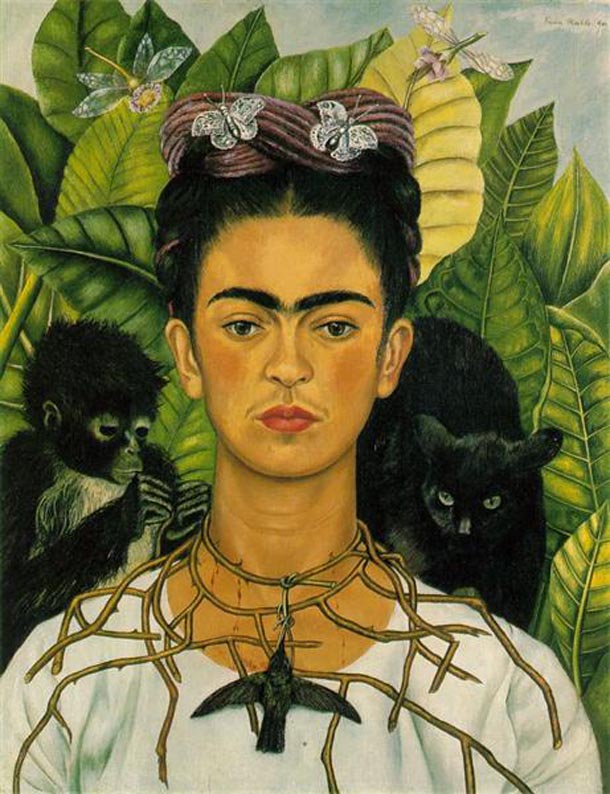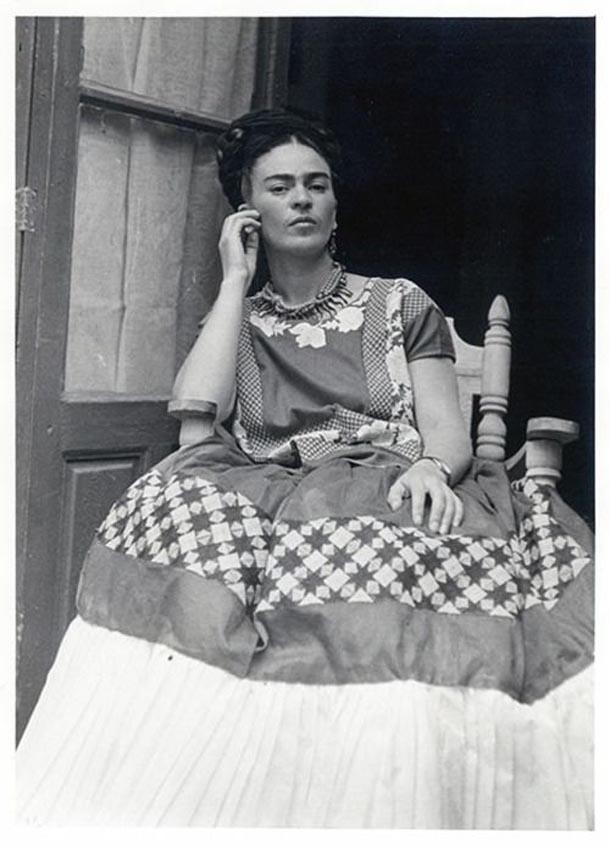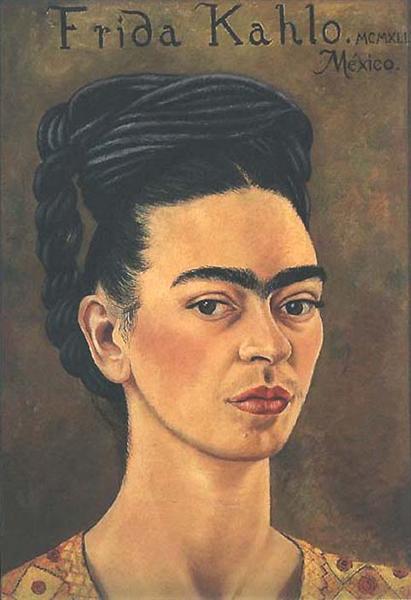She conquered the barriers related to her physical disabilities, male bias, and her political affiliations. She is an icon to feminists, the LGBTQ community, Mexican artists, and people with progressive political ideologies.
Kahlo is the first Mexican artist to have a work acquired by the Louvre in Paris, France. Her work is classified as part of the surrealist genre. The major characteristic of surrealism is that it looks like the merging of the conscious and unconscious mind to form a different reality. Kahlo’s work looks like it was drawn from her imagination – the work can look dreamlike, illogical, or as if she was under the influence of mind-altering substances.
Kahlo’s work is autobiographical; her compositions illuminate her state of mind, her physical health and her love for Diego Rivera. Ms. Kahlo’s work was introduced to western artists outside of Mexico by Andre Breton. (Breton is considered the father/founder of surrealism.) Although Kahlo was invited to show her work in Paris by Breton, gallery owners and critics found much of her work too jarring for public view.

Her letters illustrate her reaction to the elitist galleries’ resistance to showing her paintings:
“You have no idea the kinds of bitches these people are. They make me vomit. They are so damn intellectual and rotten that I can’t stand them any more. They sit for hours on the “cafes” warming their precious behinds, and talk without stopping about “culture” “art” “revolution” and so on and so forth……”
Letter from Kahlo to Nickolas Muray about the Paris Exhibition André Breton arranged for her, 1939. Kahlo found Breton pretentious, boring, vain, and arrogant. From the “History of Art,” H.W. Janson and Anthony F. Janson, 1997 revised edition.
Kahlo had a personality that was considered a force of nature. She was born in Mexico to a German-Hungarian father and a mother of Spanish and Mexican heritage. She spent time working with her father (he was a photographer) and she developed a keen eye for detail. Kahlo sometimes uses the German spelling of her name (Frieda) in the titles of her portraits. Although her father encouraged her to take drawing classes, she also enjoyed science and had an interest in studying medicine.
Unfortunately, Ms. Kahlo contracted polio as a child, and she was hit by a bus in her teens. She underwent 30 surgeries and suffered grueling pain, muscle atrophy, and difficulty walking for the remainder of her life. Kahlo adopted traditional, Mexican dress as part of her identity and to conceal the apparatus (corsets and braces) that she needed to accommodate her physical disabilities. Additionally, she sometimes dressed in men’s clothing challenging gender roles. Rei Kawakubo, Dai Rees, and Jean Paul Gaultier were inspired by Kahlo’s style of incorporating a corset into fashion.





Her love for Diego is prominently reflected in her work. Diego recognized Frida’s talent as an artist and she admired his talent and acclaim. Their political outlook and artistic endeavors were aligned even when their marital relationship was not.
In the late 1970s, Magdalena Carmen Frieda Kahlo y Calderon was rediscovered by art historians and political activists. By the 1990s, she was recognized as a juggernaut figure of art and history on numerous fronts. Today she is celebrated internationally for her autobiographical depiction of the female form.
